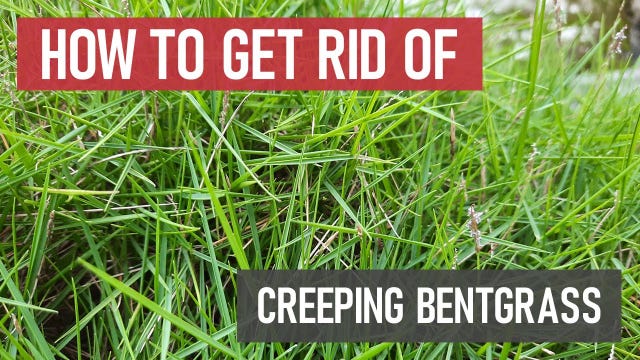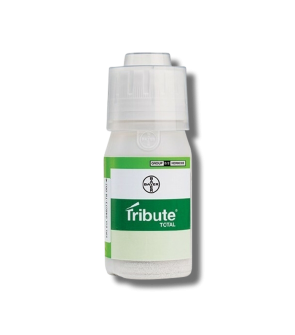Gain access to personalized product screening, the best pricing, rewards, and more!
Most Effective Products
Creeping Bentgrass Control: How To Get Rid of Creeping Bentgrass
This page is a general DIY guide for controlling creeping bentgrass. Using the products and methods suggested, you get control of creeping bentgrass. Follow this DIY article and use the recommended products, and we guarantee 100% control of creeping bentgrass.
Creeping bentgrass is a cool-season perennial grass commonly used as turf on golf courses. However, when it grows among other grasses, it can become an unpleasant weed. The leaves of creeping bentgrass are typically long and slender. They are also bright green, so they are easy to identify and set apart from your desired grass.
Creeping bentgrass usually makes its way onto lawns by being blown onto the lawns from the air or by birds flying by and dropping a plant runner onto your yard. If you examine patches of creeping bentgrass, you will notice that it contains many stems, or stolons, that extend along the soil's surface. These stolons allow creeping bentgrass to spread rapidly on a lawn.
Bentgrass becomes very puffy-looking when maintained at mowing heights above one inch. It is also susceptible to many different lawn diseases. The invasive weed also does not grow as tall as most turfgrasses and forms mats and patches that are thick and dense all over lawns. This is how creeping bentgrass operates, and if left to its own devices without intervention, it will choke out your lawn grass and zap your lawn soil of all its nutrition.
If you want creeping bentgrass gone, our easy DIY treatment guide will show you how to eliminate this grassy weed permanently. Follow the step-by-step instructions below using the recommended herbicides to the right, and you will successfully remove creeping bentgrass quickly and affordably.
Identification
Before proceeding with a treatment program, you must be certain you are dealing with a creeping bentgrass infestation. Careless identification can lead to using the wrong treatment methods, which can be a waste of time and money. Below are the following characteristics to help you understand what creeping bentgrass looks like.

- Creeping bentgrass is a cool-seasoned perennial grass that can quickly be considered a weed with its ability to spread laterally by stolons. When left to mature this plant can grow up to 3 feet tall.
- Leaf blades are narrow, flat, rolled in the bud, and have a distinct ridged upper surface. There are no auricles, and it has a long, tapered ligule that is 1-6 mm long with a pointed or feathered tip.
- During its flowering stage, this plant forms open or dense clusters of small spikelets that are yellowish to purple in color.
Use the above description and image to help you identify creeping bentgrass on your lawn. When you are unsure or can't pinpoint exactly which weed you are encountering in your yard, turn to the experts to identify the weed for you.
Inspection
Once it is confirmed that you are dealing with creeping bentgrass, you can move on to inspection. During this phase, you will locate areas where creeping bentgrass thrives and observe the conditions allowing it to thrive. This information will help you in knowing where to focus your herbicide application.

Where to Inspect
Creeping bentgrass grows best in cool and wet conditions within well-drained, loamy soils that retain some moisture. It prefers full sunlight and cannot grow well in shade.
Common sites for this weed to grow are lawns, golf courses, and other areas exposed to sunlight.
What To Look For
Creeping bentgrass begins to grow when temperatures are cool and around 55 degrees Fahrenheit, usually in the spring and fall.
This cool-seasoned perennial grass will grow low to the ground and become larger, irregularly shaped circular patches.
Treatment
When handling herbicides, properly protect your skin and eyes with safety equipment. Goggles, gloves, and long-sleeved clothing should be the minimum.
Creeping bentgrass is hard to get rid of without the help of chemical intervention. Apply Tenacity Herbicide, a selective, systemic herbicide that does a great job against this weed while sparing harm to desired turfgrasses.
Step 1: Mix and Apply Tenacity Herbicide

Determine how much Tenacity Herbicide to use by measuring the square footage of your treatment area. To do this, measure the length and width of the treatment area in feet, then multiply them together (length X width = square footage). For acreage, divide the square footage by one acre (square footage / 43,560 sq. ft. = acres).
For spot treatments, use 1 teaspoon of Tenacity Herbicide with 3 teaspoons of NIS adjuvant mixed with 2 gallons of water. Then spray 1 gallon of finished dilution per 1,000 sq. ft.
Once the product is well-mixed in your handheld pump or backpack sprayer, apply the product to the creeping bentgrass using a fan nozzle setting.
Unless renovating and/or re-seeding the home lawns, avoid broadcast applications of Tenacity Herbicide for pre and post-emergence weed control because undesirable whitening of some turfgrasses may occur.
Symptoms generally appear five to seven days after application and last several weeks. Repeat applications to the same site cause less whitening of the plant tissue.
Bentgrass, Poa annua, kikuyugrass, zoysiagrass, seashore paspalum, and bermudagrass are sensitive to Tenacity applications. Avoid spraying these turf types unless control and/or injury can be tolerated. Maintain a five-foot buffer between treated areas and bentgrass or Poa annua greens.
Step 2: Follow Up Application

For improved postemergence weed control, a repeat application after two to three weeks is required. A non-ionic surfactant should be added to postemergence applications.
Do not plant any crop other than turfgrass species for 18 months after the last application of Tenacity, or injury may occur.
Prevention
Once creeping bentgrass has been eliminated from your property, you will need to implement preventative measures to ensure that it does not return.
- You can prevent the return of creeping bentgrass after it has been controlled with cultural practices that will hinder the redevelopment of this invasive grassy weed. Creeping bentgrass often appears in older lawns, especially ones that are overwatered or fertilized heavily and mowed too short. Therefore, another aspect for future control is to do a deep, infrequent watering schedule and mow at least when the turf is 3 inches high, giving the desirable grasses a competitive edge against creeping bentgrass.
Key Takeaways
What is Creeping Bentgrass?
- Creeping bentgrass is a difficult weed to remove. It can creep into a home lawn and give it an inconsistent look.
How to Get Rid of Creeping Bentgrass
- We recommend using Tenacity Herbicide to selectively remove creeping bentgrass from your lawn. Follow the label directions carefully when applying.
Preventing Creeping Bentgrass Reinfestations
- Prevent the reappearance of creeping bentgrass by following standard cultural turf practices that promote a healthy, nutrient-rich lawn.










